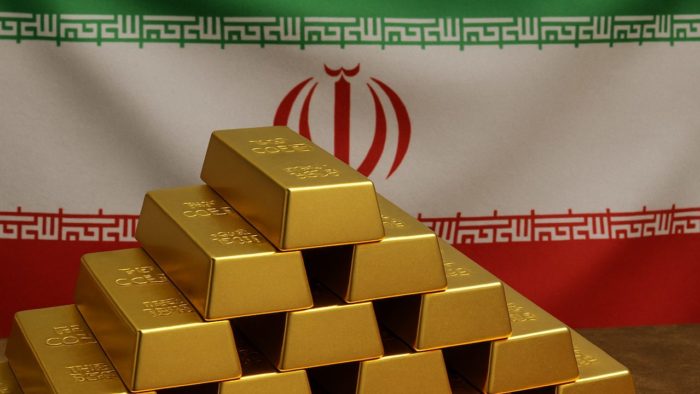(Mike Maharrey, Money Metals News Service) Gold represents financial security – even when the world is against you.
Russia has used its extensive gold holdings to keep its economy afloat in the midst of aggressive Western sanctions after it invaded Ukraine. Recent reports indicate Iran is doing the same.
Through the first six months of the Iranian calendar year (March 21-September 20), Iran imported 43 tonnes of gold valued at $2.5 billion, according to a customs report. That was a sixfold increase compared to the same period the previous year.
According to the World Gold Council, Iranian gold imports exceeded 100 tons worth over $8 billion in 2024, representing roughly 11 percent of the country’s total imports.
According to Iran International, the increase in gold imports “may reflect broader efforts by the country to shield its economy from currency shortages and manage international trade amid sanctions.”
The Iranian English-language news site asserted, “Gold has become a key safe-haven asset in Iran as the country navigates sanctions, currency volatility, and political uncertainty.”
Former Iranian bank chief Hossein Mehri said gold “vaccinates” the Iranian economy against global sanctions, dismissing concerns over a possible snapback of sanctions under the 2015 nuclear deal.
“Even if this mechanism is activated, it does not mean the collapse of the country’s economy. For 46 years, we have withstood Western pressures, and the country has become, in a way, vaccinated against them.”
The Iranian government has encouraged the flow of gold into the country. According to media reports, officials have allowed some exporters to import gold instead of repatriating foreign currency.
Typically, exporters receive payment in a foreign currency, often the U.S. dollar. These foreign currencies are then held in the Iranian banking system as reserves. Instead, the government is allowing exporters to use foreign currency to buy gold, which is then held instead of foreign fiat. This enables Iran to more easily sidestep sanctions and manage its reserves.
It also creates economic security. While foreign governments can freeze assets denominated in their own currencies, they can’t freeze gold. It is money — recognized and accepted worldwide.
Iran has also used gold to conduct transactions. A sale of drones to Russia was partly paid for with bullion. According to documents obtained by hackers, Russia paid Iran approximately $1.75 billion in a deal for Shahed-136 drones. Part of the payment was made with several tons of gold ingots.
The Iranian people have also been gobbling up gold as they deal with their government’s monetary debasement. According to World Gold Council data, gold coin and bar purchases in Iran surged by 20 percent in the second quarter of this year. Meanwhile, gold jewelry demand grew by 12 percent. It was the only market that reported an increase in gold jewelry sales. Globally, gold jewelry sales fell 14 percent year-on-year in Q2 due to headwinds caused by record prices.
Gold jewelry is often used as an investment in Asian and Middle Eastern countries and is generally of higher purity than pieces sold in the West.
Despite their best efforts, the West has found it difficult to stop countries like Iran and Russia from using gold due to its fungible nature (easy to exchange) and the global demand for the precious metal.
Gold is money, and it is recognized as such everywhere. Even if they don’t want dollars or some other fiat currencies, everybody wants gold.
This is not to justify these countries’ wartime policies. It merely underscores the nature of gold as money and its important role in the global economy. When fiat currencies are cut off or fail, gold will always remain a viable alternative.
This is precisely why so many countries are accumulating gold at a rapid pace.
Official central bank gold demand topped 1,000 tonnes for the third straight year in 2024. To put that into perspective, central bank gold reserves increased by an average of just 473 tonnes annually between 2010 and 2021.
The pace of central bank gold buying picked up after the aggressive Western sanctioning of Russia. Other countries have noted the weaponization of the dollar and have taken steps to decrease their dependence on the greenback.
According to a report by the Atlantic Council, “In recent years, and especially since Russia’s invasion of Ukraine and the Group of Seven (G7)’s subsequent escalation in the use of financial sanctions, some countries have been signaling their intention to diversify away from dollars.”
Meanwhile, the share of dollars in foreign reserves has sagged.
Other countries have recognized the power of gold and the risk of holding dollars.
It’s a lesson individuals should take note of as well.
Mike Maharrey is a journalist and market analyst for Money Metals with over a decade of experience in precious metals. He holds a BS in accounting from the University of Kentucky and a BA in journalism from the University of South Florida.

